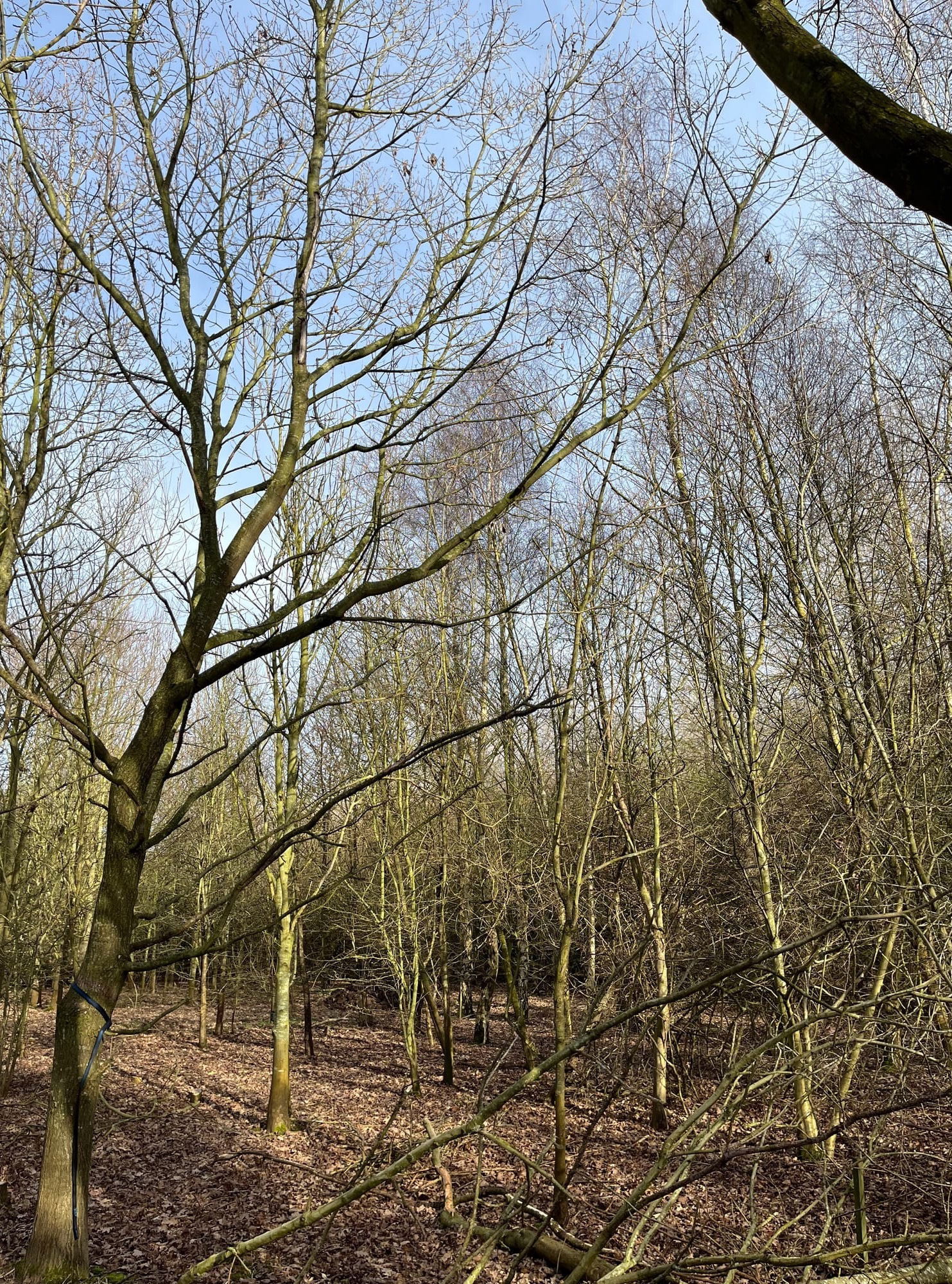One years solemn promise
Before finding our perfect woodlot, I learned as much as I could about forestry and woodland management. Partly to ensure I knew the weight of what we were taking on but mainly out of nerdy and obsessive interest.
By a country mile the most important piece of advice I took and passionately give to others is: do nothing for the first year.
Nothing…….
This essential law means do not change anything, cut anything, move anything or plant anything for a full turn of the wheel because - every woodland has a secret or two (or 101) and without observing it closely through four full seasons, we can't hope to know what they are.

Instead of charging in like an angry owl, spend time there recording, observing, keeping a journal, listing all the wildlife sightings, logging the types of wildflowers and herbs and get to know the land as intimately as possible.
A classic example of this happened to some woodsy friends of ours. They bought their woodland in the middle of summer, when the ground was dry and hard. Straight away they decided to cut a ride through the trees, to make an access lane wide enough for their car, so they could carry all their tools and camping kit easily from the public road into the deeper wood when visiting.
They felled a few trees which were in the way and hired a groundworks company to lay hardcore, at significant cost I might add; and by the September they were happily trundling in and out by car, proud of their achievement.
Then the rains came. From mid autumn to late spring, that neat new ride transformed into a boggy wetland which encircled a temporary body of water as large as any village pond, impassable by even a four wheel drive car. It completely cut off the access route and everyone visiting had to follow a longer, uneven route on foot to get to the centre of the wood and base camp.
But as a seasonal wetland area it was abundant in wildlife throughout the colder months, providing a breeding ground for amphibians and insects and serving as a valuable drinking water source for the mammals and birds - its depth prevented it from freezing heavily, the occasional thin sheen of ice easily broken by hoof or paw.
Regrets were many but lessons were learned, the hard way.
Similarly in our woodland, if we had felled trees freely (within the felling quotas permitted) during that first winter, we would have undoubtedly mistaken rowan for ash, or accidentally left the huge non-native poplars untouched whilst taking down too many larger oaks.
To our amateur eyes these trees can be easily mistaken for each other and we wanted to preserve the rowan over the sickly ash and target the poplar for veternisation over the native oak. It wasn't until they leafed up in summer that we finally identified all the trees reliably.
We could have made bad decisions on access routes too because we also have a seasonal wetland area, which in summer is a brilliant walking route through the largest portion of the site but in winter resembles a boggart infested swamp. For this reason we chose the southern ride as our permanent car access route because it is much less changeable year round.
I cannot imagine digging up a portion of glade to site a new pond, only to find I had destroyed the only pocket of bluebells or early purple orchids on site. I could never live with myself.
So aside from removing tree guards from the well established trees, over the course of our first year Dan and I did nothing, touched nothing and changed nothing.
And it was a beautiful thing.
🪻🌾🍂❄️